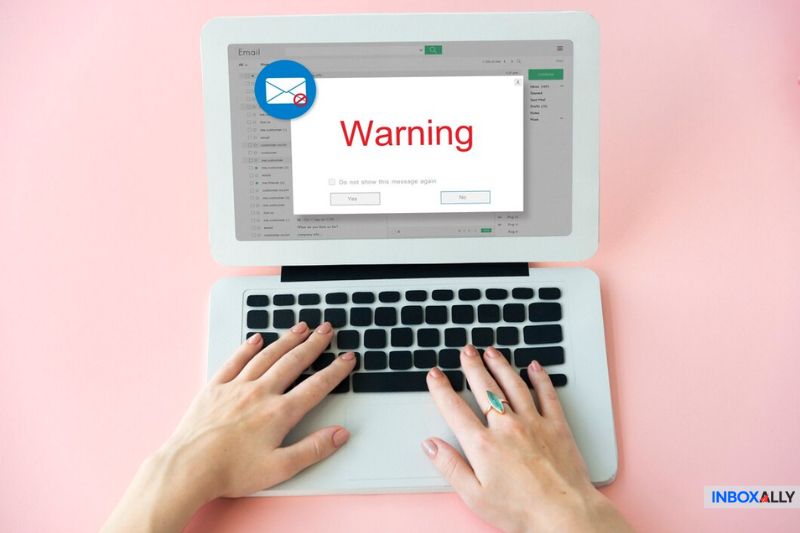You hit “send,” and the email should just… land where it’s supposed to, right? Except when it doesn’t. Messages disappear, get stuck in spam, or end up in inboxes they were never meant for.
That’s where SMTP relay—a sort of a postal system for your emails—makes sure they actually reach the right inbox instead of getting lost along the way. Without it, your messages might never see the light of an inbox.
Regardless of whether you’re sending bulk emails, marketing campaigns, or transactional messages, you need to get this right.
So let’s get to the meat of the matter: how does SMTP relay work, why is it so important, and what happens when it goes wrong? Ready? Let’s go.
The System That Moves Your Emails
When you send an email from yourcompany.com to gmail.com, it doesn’t just magically appear in someone’s inbox. SMTP (Simple Mail Transfer Protocol) relay is what makes that journey happen. It’s the invisible system that guides your email through the right channels between servers and ensures it arrives where it should—without delays, errors, or spam flags.
Much like traditional mail, where dropping a letter in a mailbox doesn’t mean it instantly appears at its destination, emails don’t teleport to inboxes either. They pass through a network of servers, get sorted, routed, and finally delivered and SMTP relay does this in milliseconds.
However, not all SMTP relays are created equal. Some providers prioritize speed, security, and sender reputation, while others get clogged with spam, suffer from poor IP address management, and cause deliverability nightmares.
If your emails are relayed through a shared SMTP service with a bad reputation, mailbox providers (like Gmail, Outlook, and Yahoo) will start treating your emails as suspicious—even if you’re following best practices.
That’s why choosing the right SMTP relay matters. Whatever type of emails you’re sending, your relay provider directly impacts your ability to land in the inbox.
So before brushing off SMTP relay as just another technical detail, ask yourself: Is my relay provider helping my deliverability—or quietly sabotaging it?
Your emails deserve better than second-guessing. Use InboxAlly to strengthen your sender reputation and ensure your email messages make a real impact on your next campaign.
“Why Can’t I Just Send Email Myself?” – The DIY SMTP Trap
Technically, you can host your own SMTP server. You can also grow your own food, build your own house, and fix your own car. But the real question is—should you?
If you’re managing email at scale, running your own email server is like launching your own postal service—expensive, time-consuming, and full of security risks.
At first glance, self-hosting sounds appealing. Full control over email sending, no reliance on third-party services, and no extra costs. But in reality, hosting your own SMTP relay comes with a long list of headaches most businesses aren’t prepared to deal with.
Why a Self-Hosted SMTP Relay Can Go Wrong
- IP Reputation Issues – Mailbox providers (Gmail, Outlook, Yahoo) are ruthless when it comes to spam prevention. If your IP gets flagged as suspicious, your emails will be blocked or sent straight to spam. And once you’re blacklisted, getting off that list is a nightmare.
- Constant Maintenance – SMTP relay servers need round-the-clock monitoring, updates, and troubleshooting. One misconfigured setting and your emails stop sending altogether.
- Spam Filtering Obstacles – Even if you’re sending legitimate emails, poor authentication (SPF, DKIM, DMARC) can still get them rejected. Without these security protocols in place, your emails look suspicious by default.
And if that’s not enough, most ISPs limit outgoing mail from self-hosted servers, meaning you’ll hit email volume restrictions before you even get started.
This is why most businesses outsource SMTP relay to specialized providers. A good relay service handles deliverability, reputation management, and security, so you’re not stuck fighting technical fires. Instead of wrestling with technical problems, you get to focus on what matters: getting your emails seen and read.
The Silent Killer of Email: Bad SMTP Relay Practices
If email deliverability issues came with flashing warning signs, life would be easier. But they don’t. There’s no pop-up saying, “Hey, your emails are quietly failing!” Instead, it happens in the background—open rates start slipping, engagement drops, and before you know it, your emails are stuck in spam or blocked entirely.
So what’s causing it?
- Relying on a “free” or overloaded SMTP service – Not all SMTP providers manage sender reputation properly. If you’re sharing an IP with spammers, your emails will be guilty by association—even if you’re following best practices.
- Skipping authentication – Without SPF, DKIM, and DMARC, email providers have no proof your messages are genuine. That makes them prime targets for spam filters or outright rejection.
- Sending too many emails too fast – Email providers don’t just watch what you send—they watch how you send it. Flood an inbox from a cold IP, and even a pristine email list won’t save you from getting blocked.
Bad SMTP relay practices don’t announce themselves, but they chip away at deliverability, sender reputation, and performance. Businesses that rely on email don’t leave it to chance—they use relay services that actively manage reputation, authentication, and volume control.
The difference between a well-optimized SMTP relay and a bad one is that one puts you in the inbox and the other leaves you guessing how many emails never made it.
If your emails are quietly getting filtered out and engagement is slipping, don’t wait until your sender reputation is beyond repair. Get started with InboxAlly‘s email deliverability service and have messages land where they belong—before deliverability problems cost you business.
SMTP Authentication: Why It’s Non-Negotiable
Sending emails without authentication is like mailing a letter without a return address. No one knows where it came from—or if it’s even legitimate. And when email providers can’t verify your messages, they don’t take chances.
SMTP authentication is what tells Gmail, Outlook, and Yahoo, “This email is real. Let it through.” Without it, your messages are far more likely to be rejected or mistaken for phishing scams.
How Email Providers Verify You:
- SPF (Sender Policy Framework) – Defines which servers are allowed to send emails on behalf of your domain.
- DKIM (DomainKeys Identified Mail) – Adds a digital signature proving the email wasn’t altered in transit.
- DMARC (Domain-based Message Authentication, Reporting & Conformance) – Enforces authentication policies and prevents domain spoofing.
Skipping authentication is both a deliverability and a security risk. If you want your emails to actually reach people (and not get tossed aside), authentication isn’t optional.
SMTP Relay and IP Reputation
Most senders don’t think twice about IP reputation—until their emails start disappearing. Every message you send leaves a digital footprint, and mailbox providers are always watching. They track your sender score to decide whether to trust your emails.
Unlike a credit score, there’s no alert when your reputation declines. No warning signs. No notifications. Just a slow, quiet decline in inbox placement—emails landing in spam, engagement dropping, and messages getting ignored.
What Hurts Your IP Reputation?
- Too Many Bounces – If emails keep failing to deliver, ISPs see it as reckless sending and start blocking your messages.
- High Spam Complaints – If people keep marking your emails as spam, mailbox providers assume you’re sending unwanted content.
- Low Engagement – If no one opens or clicks your emails, ISPs think your relay messages aren’t valuable and start filtering them out.
A bad reputation means even legitimate emails get punished. That’s why a good SMTP relay does more than just send emails—it actively protects your reputation.
A solid relay provider will warm up IPs, control sending volume, and ensure compliance with best practices. Without reputation management, your emails are just another drop in the spam-filter ocean.
IP reputation isn’t something you can fix overnight—but it’s also not something you can afford to ignore. Get your emails out of spam with InboxAlly, boost your trust score, and make sure your messages land in the inbox where they belong
Why Not All SMTP Relay Services Are Created Equal
At this point, you might be thinking, “I’ll just use any SMTP relay service, problem solved.” Not so fast. The difference between a high-quality relay and a mediocre one can be the line between reaching the inbox or disappearing into spam purgatory.
Some providers prioritize security, speed, and sender reputation, ensuring emails get delivered. Others cram too many senders onto shared infrastructure, allowing spam-heavy users to drag down deliverability for everyone.
So how do you know if your SMTP relay provider is working for you? Let’s break it down.
Who Are You Sharing an IP With?
Every SMTP relay uses IP addresses to send emails, and you’re either sharing one or using your own.
- Shared IPs – Cheaper, but you’re tied to everyone else using that relay. If one sender triggers spam filters, your reputation can suffer too.
- Dedicated IPs – Cost more but give you full control over your sender reputation. No risk of being penalized for someone else’s bad email practices.
If email is an important part of your business, a dedicated IP is usually the safer bet.
Can You See What’s Happening?
A good SMTP relay service provider gives you a clear insight into what happens after your emails are sent.
- Are they bouncing?
- Are recipients marking them as spam?
- Are ISPs rejecting them altogether?
If your provider doesn’t offer clear tracking, you could be losing emails without even knowing it.
Can It Keep Up with Your Growth?
Some relays throttle high-volume senders, which limits how many emails you can send per hour or day. If you’re running marketing campaigns, transactional emails, or time-sensitive messages, that’s a problem.
A good relay should:
- Handle sudden spikes without slowing you down.
- Prevent spam filters from flagging your emails just because of volume.
- Scale with you instead of capping your reach.
Why This Matters
Picking the wrong SMTP relay doesn’t always come with error messages or red flags. Instead, engagement quietly drops, open rates slide, and inbox placement suffers.
A good SMTP relay is a reputation manager, security layer, and deliverability optimizer all in one. Choose wisely.
Wrapping Up – SMTP Relay: A Small Detail That Makes a Big Difference
Most people never think about SMTP relay—and that’s exactly how it should be. When it works, emails just arrive. But sometimes they don’t.
SMTP relay is the deciding factor between emails reaching inboxes or disappearing into the void. Whether it’s protecting sender reputation, enforcing authentication, or making sure messages don’t get silently filtered out, the quality of your relay matters more than you think.
If your emails aren’t landing where they should, it’s time to take control. InboxAlly helps you fix inbox placement, improve engagement, and restore deliverability. After all, emails mean nothing if they aren’t seen.






